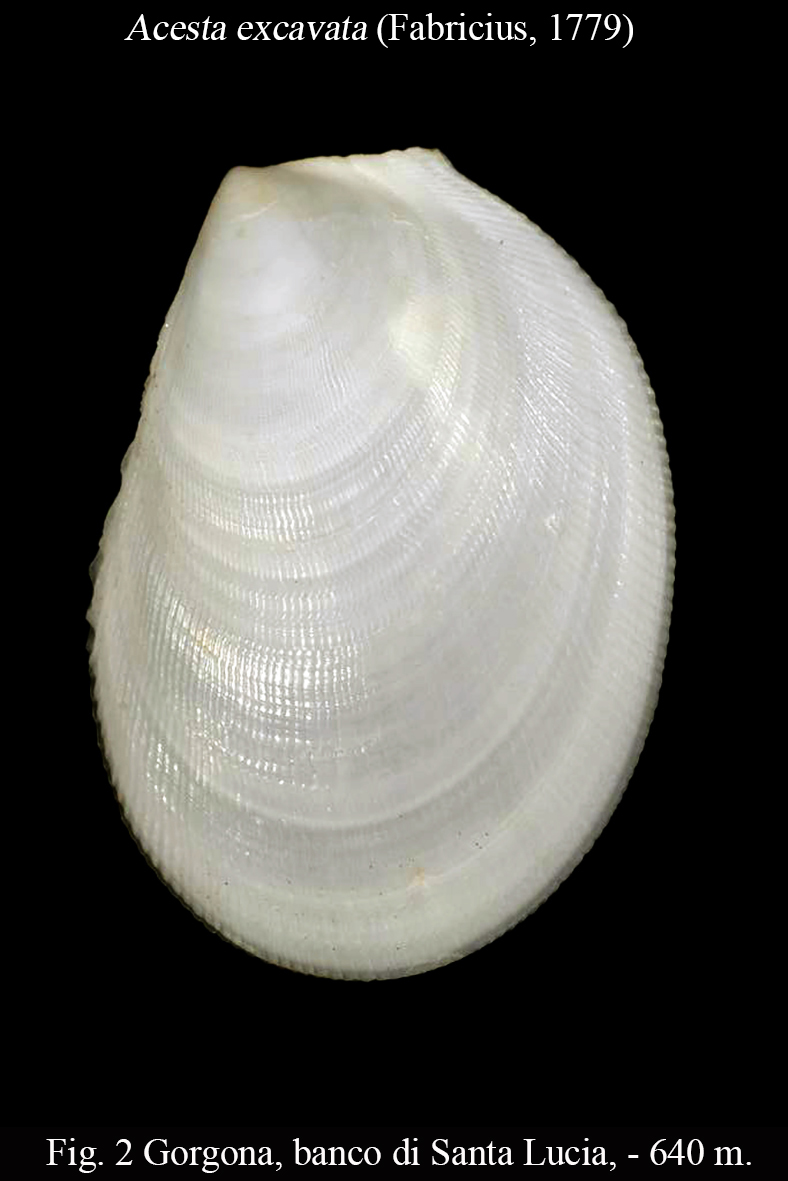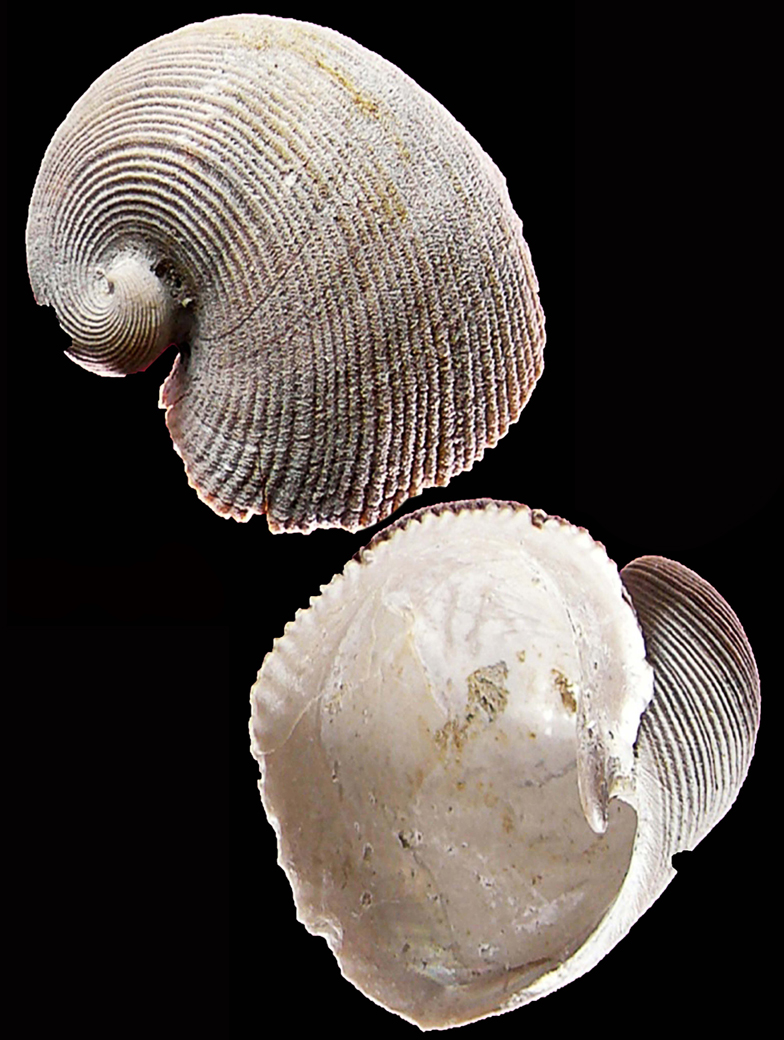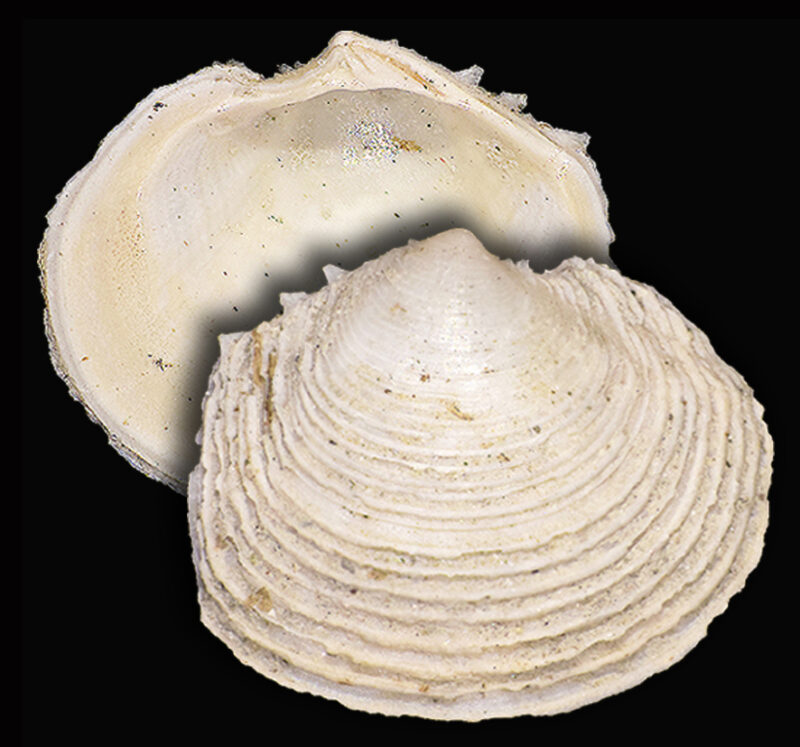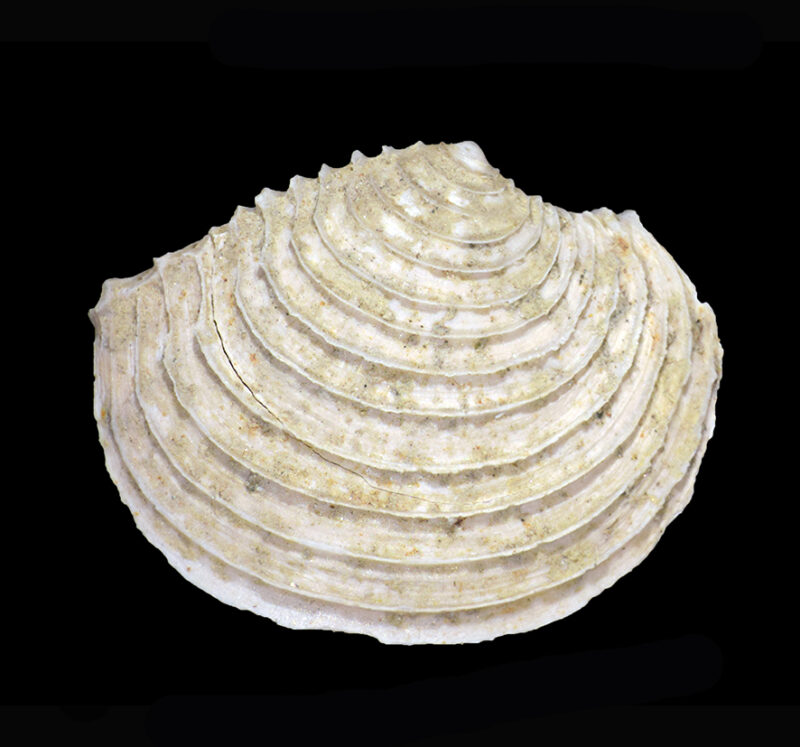Class Bivalvia
Family Lucinidae J. Fleming, 1828
Genus Myrtina Glover & J. D. Taylor, 2007
species Myrtina persquamulosa (Sacco, 1901)
Myrtina persquamulosa (Sacco, 1901) (Molusca – Bivalvia – Lucinidae) is a rare species. It can be found in both sandy and clayey sediments. Relatively common in the Pliocene surroundings of Orciano Pisano.
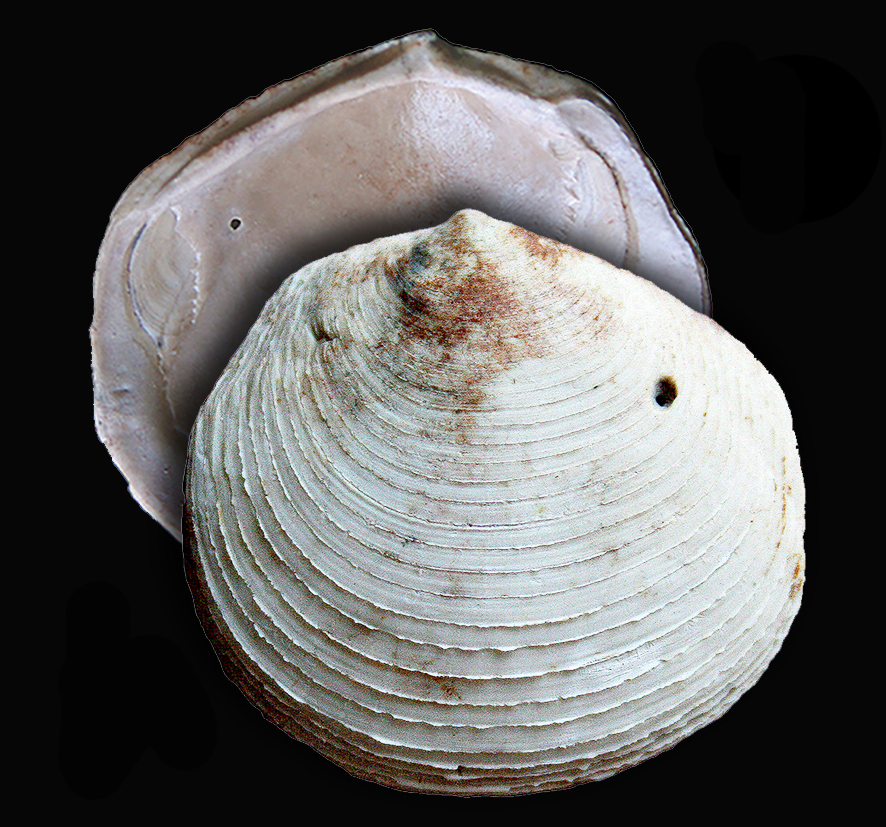
Myrtina persquamulosa (Sacco, 1901) (Molusca – Bivalvia – Lucinidae) è una specie rara. Può essere trovata con relativa facilità nei dintorni di Orciano Pisano (Pisa) Toscana, in sedimenti sabbiosi e argillosi fini di profondità.
Original description / Descrizione originale
Dentilucina meneghinii var. persquamulosa Sacco, 1901: 85, pl. 20, fig. 7
Sacco (1901) distinguished his persquamulosa variety from L. meneghinii for “lamellae squamulose-cristata concentric, etiam in medium perspicuous region”.
from p. 85 of:
Sacco F., 1901. I Molluschi dei Terreni Terziari del Piemonte e della Ligura. Parte XXIX. C. Clausen, Torino, 214 pp.
Recently reported how Alucinoma (?) persquamulosa (Sacco, 1901) (Cresti & Forli, 2018) and after considered in the genus Myrtina.
Desciption. Shell equivalent, inequilateral, with outline almost circular, rather thick, compressed and a little swollen. Prosogyrus umbo, very
On some Pliocene Lucinidae from Orciano Pisano (Italy) and notes on Alucinoma (?) persquamulosa (Sacco, 1901) short anterior dorsal margin, rectum, right and oblique posterior margin. Pretty large dimensions, average width over two and a half centimeter. Surface
with sculpture consists of dense continuous, concentric lamellae, regularly spaced from each other, which at the edges of the valves give rise to minute thorny scales. Hinge in the right valve with a cardinal tooth, in the left valve with two, short anterior lateral teeth, posterior lateral tooth lengthened according to the length of the corresponding margin. The whole hinge is poorly detectable and evident, in some specimens the dentition is obsolete. Impression
of anterior adductor muscle scar, elongated ellipsoidal, posterior scar subrhomboidal; the pallial line start from about half the total lenght of the anterior scar ending to the lower apex of the posterior scar. Pallial line more or less parallel with the margin, crossed by numerous evident serrations that protrude attenuated over the entire internal surface. (Cresti & Forli, 2018)
Distribution
Sacco (1901) reports it as frequent in the Miocene, elveziano and Tortoniano, and in the Pliocene, Piacenzian and Astiano (Rio Torsero and Castelnuovo d’Asti). Considering the confusion existing in the identification of this species, so far attributed or confused with G.
meneghinii, only the distribution for the Pliocene (Piacenzian) of Castelnuovo d’Asti and Orciano Pisano is certain.
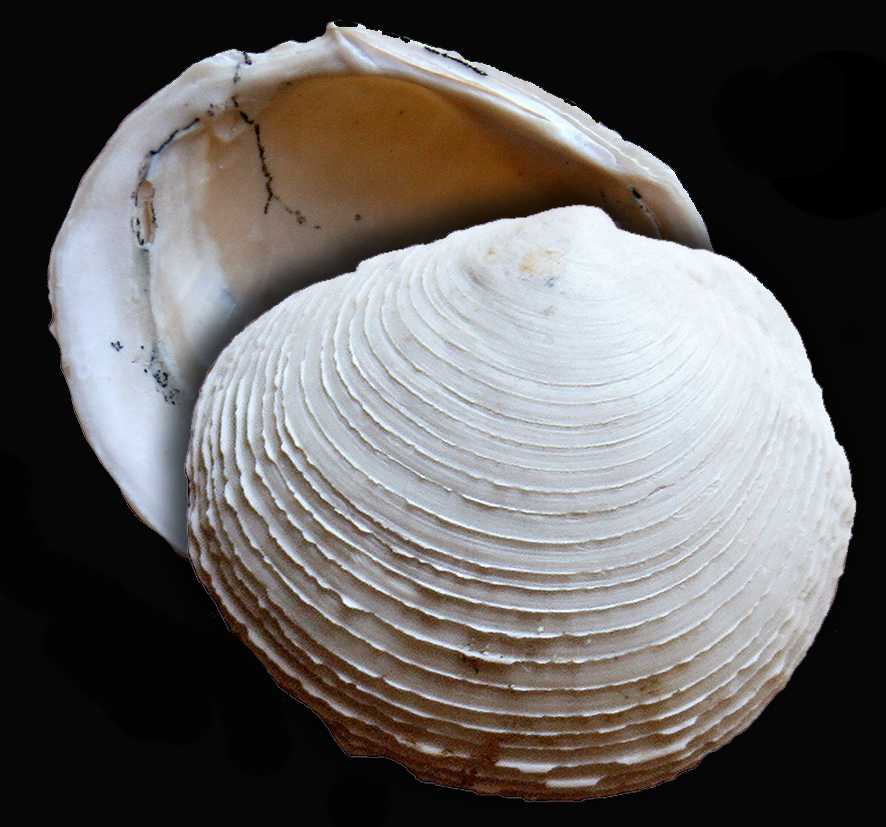
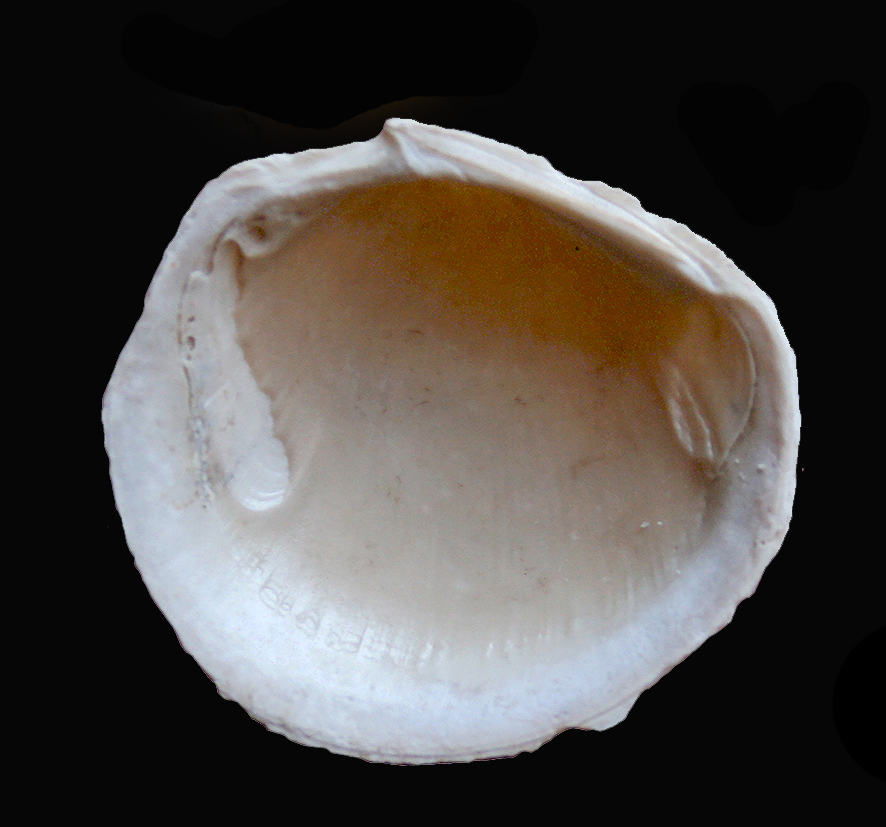
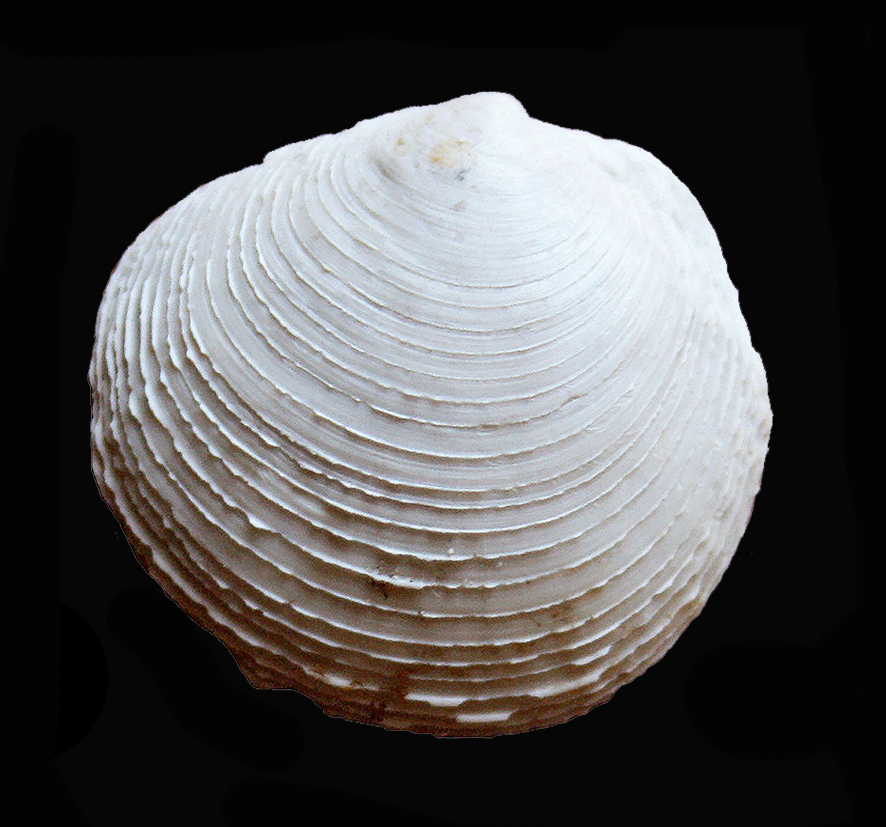
http://www.biodiversityjournal.com/pdf/9(4)_411-424.pdf
http://www.marinespecies.org/aphia.php?p=sourcedetails&id=341395
Bibliographic references and some more common synonyms
1901 Dentilucina meneghinii var. persquamulosa Sacco, 85, pl. 20, fig. 7
2018 Myrtea sp. – Brunetti & Cresti, fig. 608.
2018 Alucinoma (?) persquamulosa (Sacco) – Cresti & Forli, p. 415, Figs. 32, 36-43.
References
Brunetti M.M. & Cresti M. (2018). I fossili di Orciano Pisano, Atlante iconografico. edizioni Danaus, Palermo, 232 pp.
Chirli C. (2015). Malacofauna Pliocenica Toscana. Bivalvia Heteroconchia Hertwig, 1895. Vol. II. Tipografia Vanzi, Colle di Val d’Elsa, Siena, 233 pp.
Cresti M. & Forli M. (2018). On some Pliocene Lucinidae J. Fleming, 1828 (Bivalvia) from Orciano Pisano (Pisa, Italy) with the proposal to establish a new species: Alucinoma (?) persquamulosa (Sacco, 1901). Biodiversity Journal,9(4):411-424.
Sacco F. (1901). I Molluschi dei Terreni Terziari del Piemonte e della Ligura. Parte xxIx, C. Clausen, Torino, 214 pp.
Glover e.A. & Taylor J.D. (2016). Lucinidae of the Philippines: highest known diversity and ubiquity of chemosymbiotic bivalves from intertidal to bathyal depths (Mollusca: Bivalvia). In: Héros V., Strong E. & Bouchet P. (eds.), Tropical Deep-Sea Benthos 29. Muséum national d’Histoire naturelle, Paris: 65–234 (Mémoires du Muséum national d’Histoire naturelle; 208).
Taylor J.D. & Glover e.A. (2013). new lucinid bivalves from shallow and deeper water of the Indian and West Pacific Oceans (Mollusca, Bivalvia, Lucinidae). Zookeys, 326: 69–90.
Taylor J.D., Glover e.A, Smith L., Dyal P. & Williams S.T., (2011). Molecular phylogeny and classification of the chemosymbiotic bivalve family Lucinidae (Mollusca: Bivalvia). Zoological Journal of the Linnean Society, 163: 15–49.

